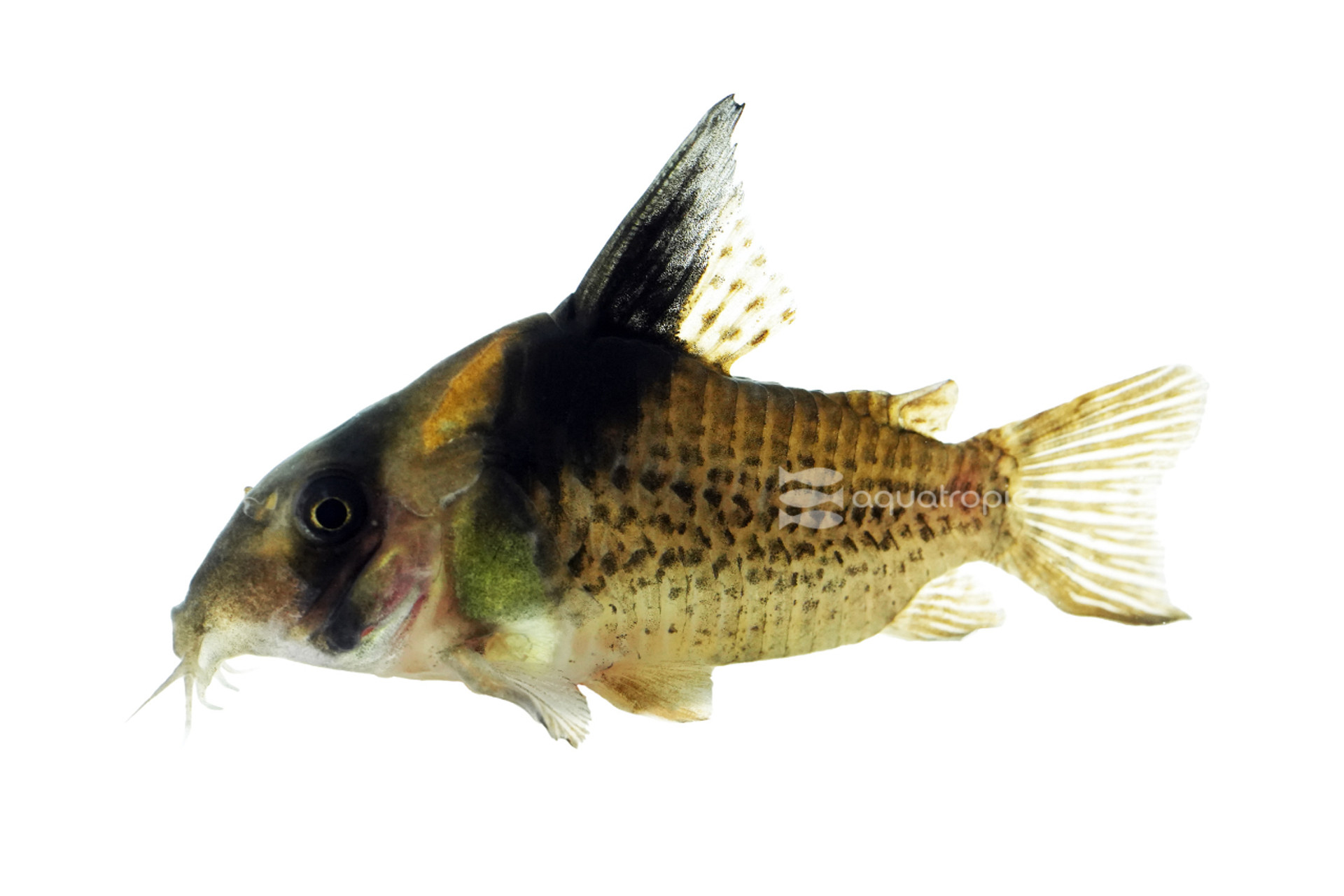Everybody Loves Cory(s)

There is a plethora of Corydoras, and it's widely accepted that there are many more species yet to be discovered. All of them are well loved by staff here at Aquatropic, but a specific favorite is the Spotted Cory (Corydoras brevirostris) which sports a dark collar right behind their head, are well spotted and at just hair over two inches long, get a bit larger than the smallest (pygmy) Corys. They have all the same great attributes as the rest of the Corys; they are engaging and very active with complex group behaviors to watch (and yes, always keep your Corydoras in groups of at least five, but more, and perhaps many more is always better.)
There are two fish that commonly get called “Spotted Corydora,” and they're often mistaken for three fish. Confused yet? Briefly, Corydoras brevirostris was once called Corydoras melanistius brevirostris. This name is no longer accepted, but there is another fish with the valid scientific name Corydoras melanistius, which is commonly called the Blue Spotted Corydora. There is another scientific name floating around which is Corydoras wotroi and this fish is considered to be a synonym of one of the other two species, but there is some debate as to which one, which makes this all as clear as mud.
On today's episode of weird and wonderful stuff about fish, Corydoras brevirostris can breathe air (all Cory's can). They've evolved in areas with seasonal, massive changes in water levels and can often get stranded in small, warm ponds when the monsoon season is over. As such, they've developed the talent for being able to swallow surface air (which you're likely to occasionally see in the home aquarium) and extract O2 from it! Still, these ponds and puddles are often a death sentence for the fish as sometimes they dry completely out, leaving the Corys high and dry.
On the topic of tanks for these Corydoras, they don't need a huge amount of space and a group of five could easily be kept in a 40-gallon breeder tank. These fish will love some cover, planted or otherwise. They also need a soft sand substrate, or very small, rounded pebbles will also work. Regardless of what you choose, it should be kept very clean and thus we don't recommend under-gravel filters for tanks with Corys in them. The do best in soft water (less than 15 DH) that is in the mid 70s temperature wise. Ideally, your display system water should be very slightly acidic, with a pH between 6.0 and 7.0. In the wild, these fish would usually be in rivers that have a slight stain, and while this is not a requirement, it does make for an interesting display, and you may find it enhances the daytime activity level of your school. Spotteds will do great in densely planted tanks and will help keep these plants clean of algae. They don't require leaf litter but do seem to relish having some to swim in and around. Rounded rocks and driftwood without sharp points can help round out this display. Spotted Corys are fairly adaptable to different parameters but should be acclimated to them slowly.
One of the biggest mistakes people make with Corydoras is they think the fish can live on algae and leftovers, and you should NOT do this. Luckily, Spotted Corys are very easy to feed and will generally readily accept a wide variety of captive foods. We like to feed them a small sinking pellet, we suggest (and use) Nutramar Complete Pellets and their Shots, which can be stuck to the low glass, or anywhere smooth. This allows the Spotteds a natural feeding behavior, with a nutritionally complete, easy food. They will also greedily accept foods like Gamma Brine, Tubifex, even Bloodworms, just make sure they are small enough for your fish and these are all appropriate foods as Spotted Cory's wild diet has lots of small invertebrates in it.
There's a wide range of fish and invertebrates that would be good tank mates for Corydoras brevirostris. Tetras are a great choice, other good choices would be other peaceful, soft water lovers. You should avoid fish big enough to try to make a meal of the Cory; their dorsal spine makes them tough to eat, and so attempts at consuming them often end badly for both the Cory and their attacker.
Corydoras of all kinds are always staff favorites around here. Spotted Corys are just a little more to love than some of the others (size wise). They are personable and very active while still being quite peaceful. They are hardy and easy as you keep their substrate clean, the tank water quality decent and feed them enough. It's a freshwater combination that is hard to beat. Remember that with Corydoras, it's always the more, the merrier; always keep a lot of them, and they will always keep you entertained. If you're interested in trying Spotted Corys in your own tank, be sure to ask for Corydoras brevirostris from Aquatropic. Tell your LFS we sent you!